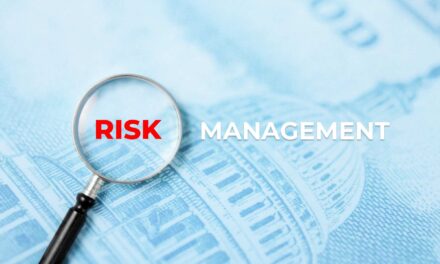In complying with social distancing and remote workforce mandates, financial institutions are digitalizing their identity verification and money-laundering regimes.
The COVID-19 pandemic has changed the world in ways that will linger long after the coronavirus has been eradicated.
The most significant change by far, has been the adoption and acceleration of digital transformation across many facets of life and business, from the examples above to home-based education and virtual entertainment taking the place of schools or cinemas.
With people finding these new forms of service delivery adequate and more efficient, we can expect that they will now co-exist with or eventually replace their previous incarnations. Amidst all these, the Know Your Customer (KYC) and Anti-Money Laundering (AML) processes that underpin the financial system are likewise under pressure to evolve.
The Financial Action Task Force (FATF) and Interpol recently warned of an increase in criminal activity and fraud during the current crisis, with money laundering and terrorism financing a major concern. According to the FATF, “criminals and terrorists may seek to exploit gaps and weaknesses in national AML / Counter Financing of Terrorism (CFT) systems while they assume resources are focused elsewhere, making risk-based supervision and enforcement activity more critical than ever.”
One example is a reported spike in ‘money mule’ activity, where criminals target those recently made unemployed with ‘large salary working from home’ job advertisements, only to trick their victims into using personal bank accounts to launder money.
With shifts in consumer behavior and heightened fraud risk, here are three trends that are reshaping KYC and AML in a COVID-19 world.
Socially-distanced identity verification
The FATF has encouraged “the fullest possible use of responsible digital customer onboarding and delivery of digital financial services.” This comes at a time when an enforced change in consumer behavior, coupled with the acknowledgment that technology can play a vital role in combatting money laundering and fraud, is forcing traditional players to follow the lead of their digitally-native competitors.
Digital banks have emerged across the region since 2014, with five and three licenses being awarded in China and South Korea respectively to date, eight licenses issued in Hong Kong in 2019, and five licenses in Singapore this year. Accompanying their entry are data-driven approaches that have led to better customer experiences and innovations in meeting compliance obligations.
The smooth and efficient onboarding of customers is one of the most critical elements of digital banking. McKinsey, therefore, found that 55% to 80% of customers in Asian countries would consider opening an account with a branchless, digital-only bank.
Several incumbent banks in Asia are experimenting with technology to meet this demand. Seven Bank of Japan, for example, has introduced facial recognition technology in its ATMs to allow customers to open bank accounts directly through the machines.
For financial institutions in most countries, KYC and AML policies require in-person meetings as a stringent means of identity verification when onboarding new customers. However, remote work and social distancing restrictions have made this problematic. Businesses with an existing digital imprint have addressed this problem more quickly and effectively. They continue to use digital channels to efficiently capture data from customers and derive risk-related insights. Others have shifted toward a more flexible approach and implemented video-based ID verification or liveness checks.
As financial institutions evolve to meet customers’ latest digitally-driven expectations, they must proactively and simultaneously consider how to adjust their processes for AML / CFT, while staying compliant with regulatory mandates.
Fully-automated red flag management
Despite countries’ easing of lockdown measures, remote-work arrangements are still largely in place to minimize infection risks. This therefore means that any institution that relies on manual or paper-based processes will face significant challenges, including those that use automated AML and KYC checks, but subsequently process any red flags manually.
For example, imagine having to investigate an overwhelming number of red flags because customers are now displaying patterns of behavior that would be ‘suspicious’ during normal times. Many businesses will also be receiving financial aid from government stimulus packages and criminals will inevitably see opportunities to sneak-in illicit financial flows amongst the sheer volume of transactions taking place. In these circumstances, pinpointing questionable activity without impeding legitimate customer activity, has been difficult.
Unfortunately, Accuity research highlights that several banks across the APAC region still maintain a manual system for KYC and Customer Due Diligence (CDD) checks. To compound this issue, many screening systems only allow access to the checking system if a user is logged in at the bank’s headquarters, leaving remote-working compliance teams handicapped until measures can be adapted.
Again, institutions that were already using cloud-based technology responded more quickly and effectively. From here on, we also expect to see a heightened interest in the use of machine learning (ML) and AI-powered compliance tools to reduce false positive alerts and compliance teams’ overall workloads.
The pandemic has crystallized the view that the ideal system for AML and KYC is one that is intelligent and efficient, provides excellent service for customers, and allows secure access by compliance staff from any location.
APIs on the rise
Finally, with respect to customer onboarding, KYC and compliance screening solutions, the importance of systems and applications that can seamlessly communicate with each other via application programming interfaces (APIs) is becoming equally important.
With compliance teams working from home, imagine if the latest external data from financial institutions, central banks, regulators, and other necessary sources for conducting due diligence checks could be retrieved and integrated into existing workflows in real-time.
Automated capabilities can then be applied on top of the third-party data to ensure that the system takes the load of onboarding new customers and facilitating transactions, without compromising AML / CFT risk.
The latest API tools for fighting financial crime allow compliance teams to avoid repetitive tasks, focusing instead on the higher value aspects of performing robust KYC. The use of these APIs—the connection points between platforms and ecosystems—was already growing before the pandemic and we expect their use to expand even more rapidly in the future.
Failure to provide digital services now means that organizations literally cannot do business. For the financial services industry, the COVID-19 pandemic is forcing a change in the way technology, people and processes come together to manage daily operations and ensure compliance.
At this inflexion point, the ability and willingness to embrace digitization and automation will determine whether they thrive in the new world that has emerged.





















